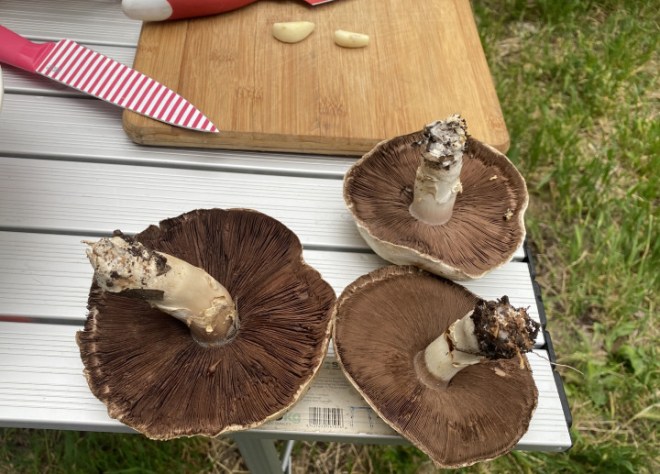Initially, the plan was straightforward, my partner and I were to head north in our simple campervan to the Northern Territory and then loop back to Melbourne via Mount Isa and the inland roads of Queensland and make our way back to Melbourne.
But just like my cooking, there were revisions, adjustments, unexpected twists and the itinerary evolved – the two-month trip became a three-month exploration.
I left Melbourne on July 16 (2024) driving first to Mildura and then through parts of South Australia to the Flinders Ranges and on to Marree and Coober Pedy. From there we planned to travel via Uluru and Kata Tjuta National Parks to Toritja (Western McDonnells) and Alice Springs to Darwin, stopping off at Litchfield National Park, Katherine Gorge and, of course, many places in between.

The second lap was from Darwin to Kakadu and Katherine, into Karumba in the Gulf of Carpentaria, the Atherton Tableland to Cairns, down the Great Barrier Reef Coast through places like Mission Beach and Cardwell to Townsville.

From Townsville, I travelled through inland Queensland to Emerald, Carnarvon Gorge and Roma, and into Northern New South Wales to Lighting Ridge, Dubbo and Canowindra, Junee, Jerilderrie, Shepperton. Once again with many places in between.


Every location and every state disclosed their unique cultures and tapestries of breathtaking landscapes, waterfalls, vibrant colours, extremes of dry and lush vegetation, shifting weather, dawn and dusk, and the fascinating cycles of the seasons. The six Aboriginal seasons rather than our four colonial imports make so much more sense in a country as vast as Australia. I marvelled at the ancient rock paintings and the splendid Aboriginal Art in galleries and museums.

Cooking in our camper van is an outdoor affair. Meals were quick and easy, ready to be eaten and cleaned away before dusk to escape the incoming swarm of mosquitoes and sandflies. The buzzing of the mosquitoes was a constant alert to their presence, but the tiny insects were crafty, silent attackers, their bites lingering for days.

This transient cooking meant I didn’t always have sufficient light or time to take photos of our meals Still, my partner and I ate extremely well and healthily, even if in the remote outback, the variety of fresh vegetables were lacking. I took my chances to stock up for a few days at a time from the larger towns.
I bought fresh herbs (such as parsley, rosemary, thyme and oregano) from home and was happy to find the bay leaves and thyme lasted in the ice box for about four weeks. In some supermarkets I was able to buy basil and coriander. From a stall in the front of a sugar cane plantation in north Queensland I bought fresh tumeric. As you can see, my cooking was not all Italian, but the principles, respect of ingredients and dedication remain the same.

I cooked mainly vegetarian meals: cauliflower, zucchini, red peppers and sweet potatoes were always available and I made many tasty vegetable braises using pulses, often with eggs poached in the braises or topped with feta. This was the cheese that mostly available, sold in plastic packs, I was willing to I forget the Italian fresh cheeses as I was for anything that was a little out of the ordinary.
Tomatoes, avocado, lettuce and, strangely enough, rocket and red cabbage were also available in some places so I managed to make interesting salads. I did not expect to see any Italian greens, but bok choi was plentiful in most places – especially North Queensland – and a variation of simple stir fries with bean curd was often on the menu. Pulses and nuts have always been part of my cooking. Once again I had to I forget the Italian vegetables and anything that was a little out of the ordinary.
I seem not to have bothered with taking many photos of vegetarian dishes, instead I took photos of the very few occasions I cooked meat or fish – Barramundi in the gulf of Carpentaria and in northern Queensland, green tiger prawns on Queensland’s north coast and fillet steak in the Northern territory and it was so good to find lush greens in the Atherton Tablelands that I bought pork fillet, bok choi, coriander and fresh ginger that I accompanied with squashed cucumber.
Barramundi cooked two ways:


Fillet steak with a herb butter:
Pork fillet with bok choi
Green Tiger Prawns:



We only had two meals out, each with friends and here, too, we embraced the local flavours. In Cairns, northern Queensland I ordered barramundi at a yacht club with friends visiting from South Australia and later, in Canowindra in central New South Wales, I enjoyed a hearty steak, fittingly so, since our friend is an environmental consultant, pastoralist adviser and beef cattle rancher.
Purchasing alcohol while traversing the outback comes with its own set of rules, and ordering alcohol can be an intimidating experience! I quickly learned that beer reigns supreme as the drink of choice. And if you find yourself in a remote location, avoid asking for specific wine varietals, dry cider, or red wine that has not been chilled to the same degree as beer—there’s no forgiveness!
Phone and internet coverage was very spotty at best in the outback. When we did manage to connect, it was all about researching maps, checking road conditions, and booking campsites.

In my previous post, “From Melbourne to Darwin,” I shared snapshots of some of the food from that leg of the journey, and I’ll continue to do this in this post. i had difficulties selecting photos, there are so many, and we covered so much ground.

See other posts about cooking and camping:
TRAVELLING, Melbourne to Darwin
GLAM COOKING ON THE ROAD Camping
PRODUCE IN GIPPSLAND Campside Eating
EATING WELL, Camping in Tasmania, BBQ chicken-Pollo alla Diavola



















































































































































































